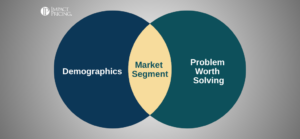TIOLI stands for Take It Or Leave It. These are markets or customers where you don’t negotiate prices. Retail is TIOLI. You set one price, and buyers decide to buy or not. B2B companies negotiating large deals is not TIOLI. But B2B sellers often have some means of selling to smaller customers like through distribution or direct online. These are TIOLI.
You already know that price segmentation means charging different prices to different customers based on their willingness to pay. But how can you do this in a TIOLI market if you only set one price? The key is to set several prices and make it so the right customer receives the right price.
There are three basic techniques for price segmentation in a TIOLI market: customer characteristics, transaction information, and hurdles.
Customer characteristics are things you learn about a customer that don’t change rapidly. These could include size, geography, industry, etc. It’s pretty common for B2B companies to charge lower prices in Asia than in the US or Europe. What are the characteristics of your customers with the highest willingness to pay?
Transaction information is what you learn during the sales cycle or at the time of the transaction. These could include who the competitor is (if any), the application, how quickly they need it, etc. For example, charging more for expedited delivery is pretty common.
Hurdles are obstacles you put in the buyer’s way, so they prove to you they are price sensitive. In retail, coupons are a great example. It’s not as common in B2B sales, but one example is a training company who offered a “scholarship” if you filled out the scholarship application. They gave the discount to everyone who filled it out, regardless of what they wrote.
The key in TIOLI markets is to identify which customers or situations get the most value, and then find ways to charge them more. However, every time you add a new price segmentation tactic, you complicate the internal workings of your company. My recommendation is to add one more technique. By adding them one at a time, you will learn when the additional profit isn’t worth the hassle.
What interesting price segmentation techniques have you seen?
Now, go make an impact!















